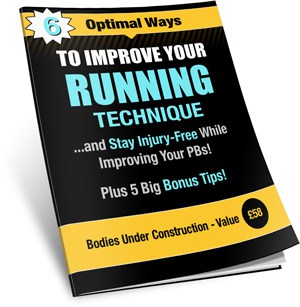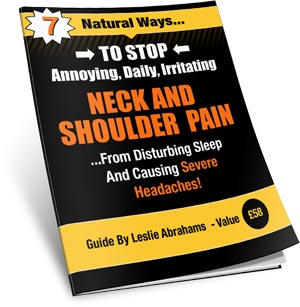At Bodies Under Construction we see a LOT of clients struggling with back pain and I mean a lot! At least 75% of our week, every week, is filled with people who have a bad back. So you can say that we are pretty experienced in helping people just like you overcome debilitating back pain. We see people with achy backs through to those in agony who literally drag themselves in to the clinic.
With that being said, I want to talk to you about those pesky discs that we hear so much about. I am going to talk about 4 myths in particular and then expand on the one common myth regarding the discs in your spine and successful ways to get over any disc pain or injury.
Myth 1 – If you have lower back pain, you should stay in bed

When back pain strikes, our natural instinct is to rest, avoid movement and wait for the pain to pass. HOWEVER, studies have shown that being active and performing targeted and gentle exercises can help improve low back pain. In fact, our impulse to stop moving and protect our spines can actually cause abnormal movement patterns and stress, leading to ongoing pain after the original injury has healed. If you are unsure of what kind of exercises and activities you should be doing, your physiotherapist can help guide you with a targeted exercise program
Myth 2 – Severe pain means severe damage

Pain that is severe, strikes suddenly and without warning can be a very scary experience! If this happens to you, you could be forgiven for assuming you must have sustained a very serious injury. The fact is, however, that the spine, being surrounded by nerves is a particularly sensitive area of the body and pain in this area can be very strong without significant damage. A small ligament sprain or muscle tear can actually cause a large amount of pain and it is common for intense symptoms to settle down quickly, even disappearing within a few days. In many cases, symptoms that last for longer than 2-3 weeks are caused by changes to your movement patterns in response to this pain and not the original injury itself.
Myth 3 – A scan will show me exactly what is wrong

Sometimes it will, but most often it won’t! Also, even people without back pain have changes in their spine so scans can cause fear that influences behaviour, making the problem worse!The vast majority of people with lower back disc bulges actually have absolutely NO pain or symptoms! A massive 77% of 70 year olds have disc bulges evident on MRI but don’t experience any pain. Makes you think doesn’t it?
Myth 4 – Discs in your spine can slip out of place
One of the most common misconceptions that we hear as Physiotherapists is that people say they have “SLIPPED THEIR DISC”. They have either decided this by consulting “Doctor Google” or they have been told this by a real doctor, health professional or listened to a family member or friend.
Do you know anyone who has been told that they have a slipped disc? I bet there is a least one person you know…….
Discs make up a key component of our spine, they are sandwiched between two of our spinal bones called vertebrae. There’s a perception out there that discs are weak and fragile.
The disc is sandwiched between 2 end plates that are very strong indeed and act like a pressure plate to ensure that there is no slipping. The end plate is in fact attached to the outer layer of the disc.
So, I bet you are now thinking if discs are so strong, why do so many people struggle with problems from them? Let me explain… discs tend to bulge not slip!…
 Think about a yummy jammy doughnut… The jams sits in the middle and when we take a bite in to the doughnut what happens?…. That’s right the jam oozes out. This is similar to what happens with discs. With time, the discs can dry out, and the jam in the middle can leak through the outer lining. This is called a “disc bulge”. In more severe cases the inner material (the jam) can come through the outer layer but this is rare!
Think about a yummy jammy doughnut… The jams sits in the middle and when we take a bite in to the doughnut what happens?…. That’s right the jam oozes out. This is similar to what happens with discs. With time, the discs can dry out, and the jam in the middle can leak through the outer lining. This is called a “disc bulge”. In more severe cases the inner material (the jam) can come through the outer layer but this is rare!
Disc problems can indeed lead to back pain that can aggravate the spinal nerve(s) causing leg pain. (Sciatica if coming from the lower levels of the lower back).
What to do if you have been told you have a slipped disc
1. Get a 2nd opinion
This really is the best way forward…. As Physiotherapists we are often best placed to review your back pain, and look at the big picture. Having a disc issue is common but we need to find out why that disc problem occurred in the first place, as there will be a reason.
2. Keep moving
Have you ever been told to rest in bed, or the floor if you back is in acute pain? Your doctor may have told you to do this. This is the worst thing you can do…why? Because you will get stiffer and weaker, which will give you more pain, not less!
3. Do the right exercises at the right time
The exact exercises will depend on how your symptoms present, but keeping active and strong is a great starting point. Please don’t take advice from friends or family about back pain, sciatica, or disc problems unless they are a qualified health professional and have fully assessed your back.
And please please, do not do exercises you find on google, facebook or any other social media channel, as even if given by health professionals they are generic exercises and not specific to you, your body and your pain problem. Bespoke exercises are ALWAYS best as you know they are tailored for your specific needs.
4. Get good quality treatment
Go see an expert in back pain treatment. You will need a bespoke treatment plan tailored for you, your symptoms and your body for back pain to resolve. This is not a one size fits all problem.
Things to look out for when choosing who is best to help treat you – anyone can put you on a machine, tell you to use ice or heat, but none of these solve the root cause of the problem. They are like a band aid treating the symptoms, and not the cause. Unfortunately you will not get pain free with this approach. If you don’t get the cause sorted out, mark my words your back pain will be back to haunt you at some point in the future!
5. Pilates
This is a great structured form of exercise to allow you to engage those core muscles, get you moving well, and help you get out of pain.
Word of warning… please choose your instructor carefully as Pilates is not a protected title and anyone can set up a class with very little training.
If you have aches and pains, it’s always best to be in a smaller class and be taught by a health professional such as a Physiotherapist initially as they will give you exercises that are safe and specific to your needs & will come round and check that you are doing the exercises correctly.
If you’d like more info on this, and some easy, actionable tips you can use now to start easing your back. We have a free back pain guide available on out back pain page below.








